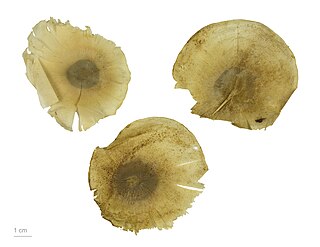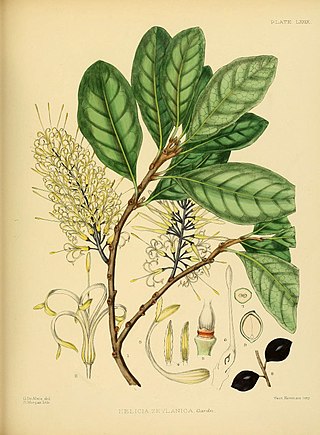
Herring are forage fish, mostly belonging to the family of Clupeidae.

The International Union for Conservation of Nature (IUCN) Red List of Threatened Species, also known as the IUCN Red List or Red Data Book, founded in 1964, is an inventory of the global conservation status and extinction risk of biological species. A series of Regional Red Lists are produced by countries and organizations, which assess the risk of extinction to species within a political management unit.
Cypress is a common name for various coniferous trees or shrubs of northern temperate regions that belong to the family Cupressaceae. The word cypress is derived from Old French cipres, which was imported from Latin cypressus, the latinisation of the Greek κυπάρισσος (kyparissos). Cypress trees are a large classification of conifers, encompassing the trees and shrubs from the cypress family (Cupressaceae) and many others with the word “cypress” in their common name. Many cypress trees have needle-like, evergreen foliage and acorn-like seed cones.

Threatened species are any species which are vulnerable to extinction in the near future. Species that are threatened are sometimes characterised by the population dynamics measure of critical depensation, a mathematical measure of biomass related to population growth rate. This quantitative metric is one method of evaluating the degree of endangerment.

Erica cinerea, the bell heather, is a species of flowering plant in the heath family Ericaceae, native to western and central Europe.

Aspidosperma quebracho-blanco, commonly known as Quebracho blanco, kebrako, or white quebracho, is a South American tree species, native to Brazil, northern Argentina, Bolivia, Paraguay, and Uruguay. It must not be confused with other species also known as quebracho, but belonging to the genus Schinopsis.

Aspidosperma is a genus of flowering plant in the family Apocynaceae, first described as a genus in 1824. It is native to South America, Central America, southern Mexico, and the West Indies.

Notiosorex cockrumi, also called Cockrum's gray shrew or Cockrum's desert shrew, is a tiny species of shrews named in 2003. This red-toothed shrew, which is as light as a penny, is the first new mammal species from Arizona since 1977. Its range extends from Arizona to central Sonora, Mexico.

Hypericum scopulorum is a species of flowering plant in the family Hypericaceae. It is endemic to Socotra, an island archipelago that is part of Yemen. It is a common plant in shrubland habitat, and it is a dominant species in some areas along with Cephalocroton and another local endemic, Libinhania rosulata.

Satranala decussilvae is a species of flowering plant in the Arecaceae family. It is a palm endemic to Madagascar. It is the only species in the genus Satranala, and is threatened by habitat loss. There are perhaps 200 mature individuals remaining.

Aspidosperma megalocarpon is a species of plant in the family Apocynaceae. It can be found in Belize, Colombia, Ecuador, El Salvador, Guatemala, Honduras, Mexico, Nicaragua, Panama, Suriname, Venezuela, and NW Brazil.
Aspidosperma triternatum is a species of plant in the family Apocynaceae. It is found in Argentina and Paraguay.

Helicia is a genus of 110 species of trees and shrubs, constituting part of the plant family Proteaceae. They grow naturally in rainforests throughout tropical South and Southeast Asia, including India, Sri Lanka, Indochina, Peninsular Malaysia to New Guinea and as far south as New South Wales.

Tabernaemontana corymbosa is a species of plant in the family Apocynaceae. It is found in Brunei, China, Indonesia, Laos, Malaysia, Myanmar, Singapore, Thailand, and Vietnam. Glossy green leaves and faintly sweet scented flower. Flowers continuously all year. Frost tolerant. Grows to about 2metres. Likes full sun to part shade. A number of cultivars are available.

Turraeanthus africanus is a species of plant in the family Meliaceae, also known by the common names avodiré, apeya, engan, agbe, lusamba, wansenwa, African satinwood, and African white mahogany.

Aspidosperma spruceanum is a species of flowering plant in the genus Aspidosperma. It is native to Brazil, Bolivia, Peru, and the Guianas.
Malagasia is a monotypic genus of trees in the family Proteaceae. The sole species is Malagasia alticola, endemic to Madagascar.
Hypericum fissurale, known as cracked St. John's wort, is a flowering plant in the St. Johns's wort family (Hypericaceae) endemic to northeastern Turkey. It is considered critically endangered on the IUCN Red List due to its very limited distribution and declining population. It was first formally named by Jurij Nikolaewitch Woronow in 1912. It is a small perennial herb in the section Hypericum sect. Taeniocarpium, reaching around 22 cm (8.7 in) in height. Like most Hypericum species, it has flowers with five yellow petals and numerous stamens. Hypericum fissurale is closely related to Hypericum armenum.














